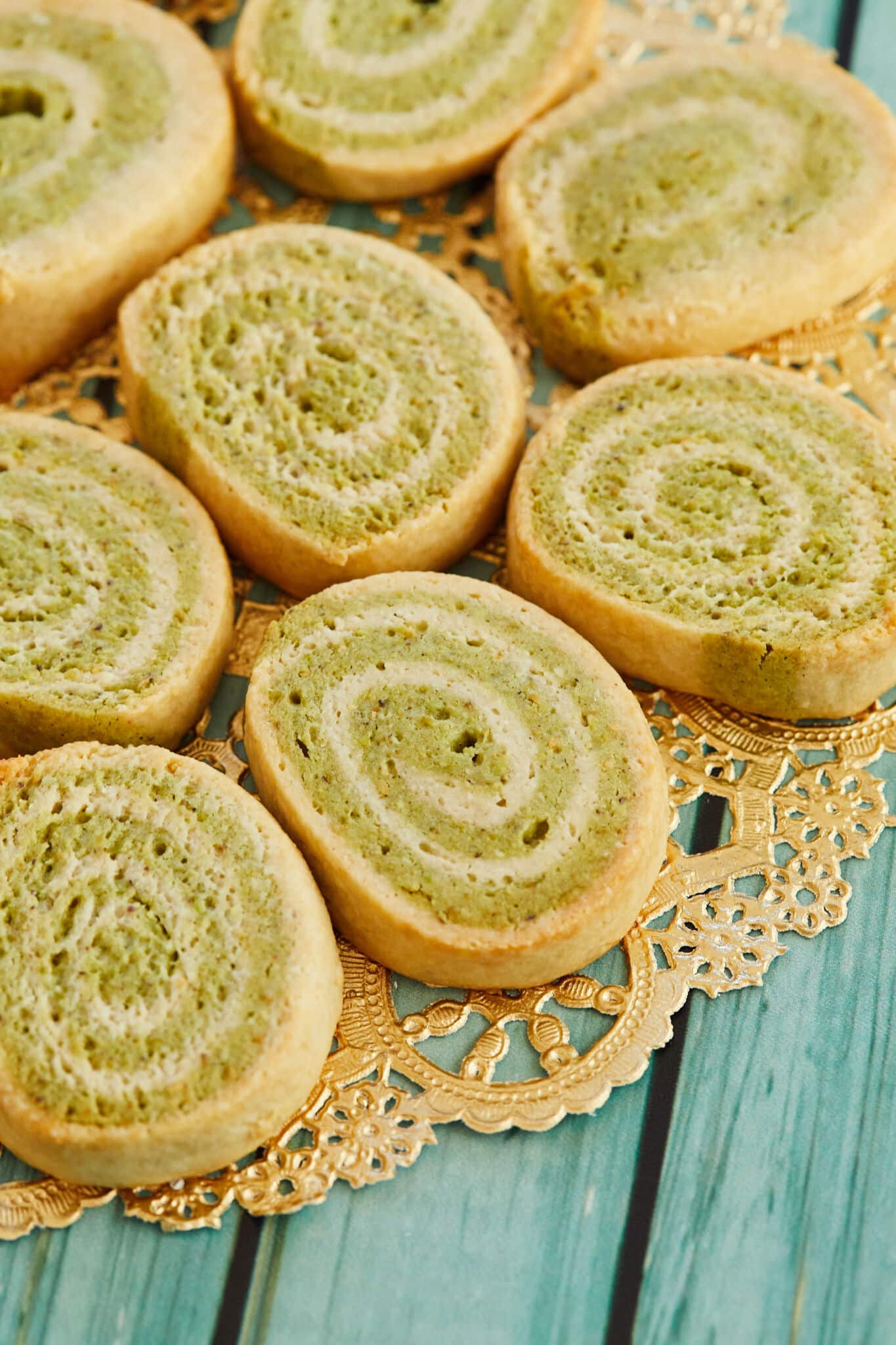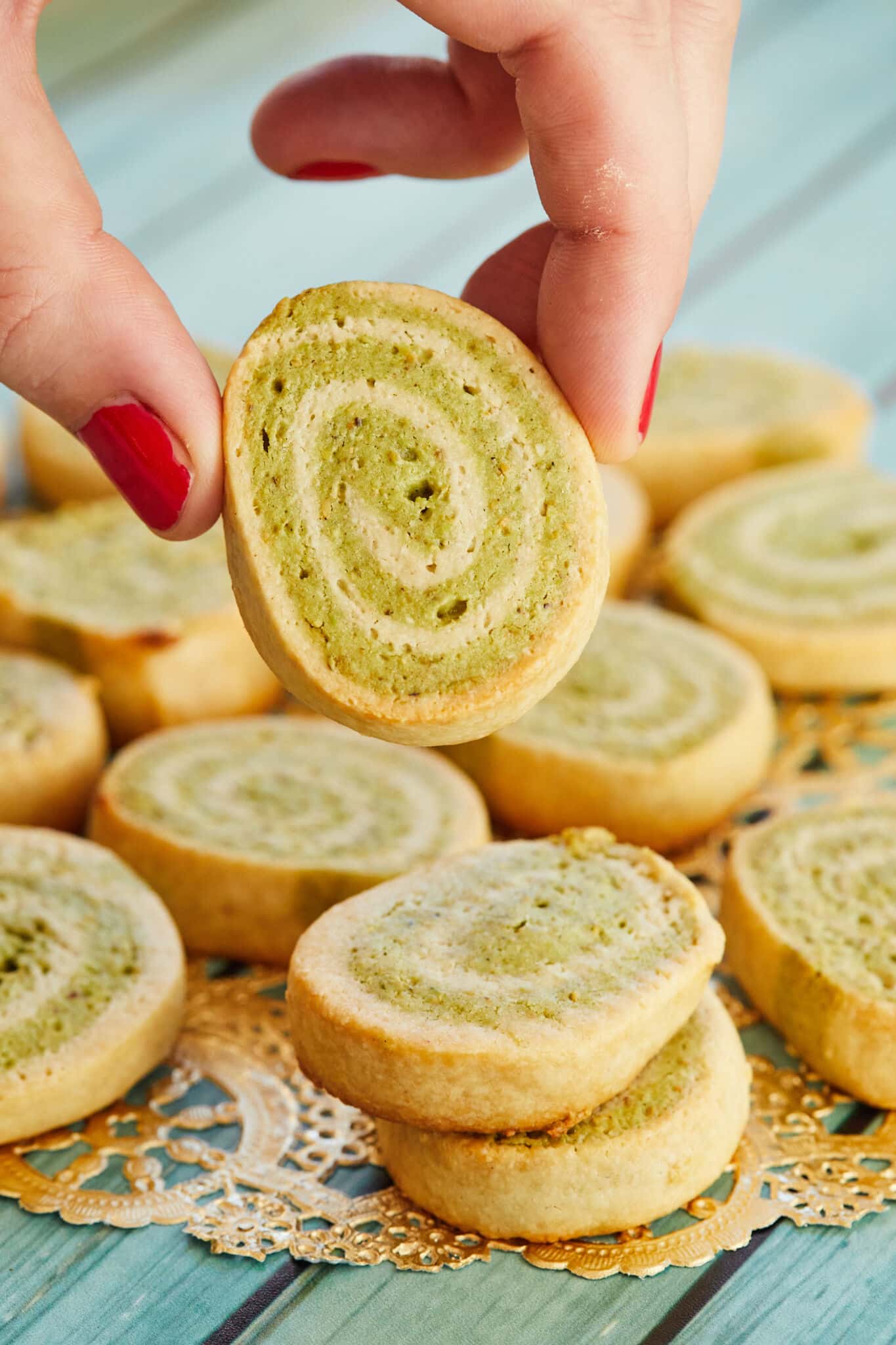Hi Bold Bakers! This traditional Indian sweets recipe comes to you from Gemma’s culinary assistant, Ami, who enjoys these flavorful no-bake Kaju Pista Rolls with her family during Diwali! Already have an account? This traditional Indian sweets recipe for Diwali Kaju Pista (Cashew Pistachio) Rolls is satisfyingly dense and nutty, and subtly perfumed with cardamom and rosewater. Simple to make but definitely not simple in taste! And because we’re using nut flours, this Indian sweet is gluten-free. Diwali, the Indian Festival of Lights, is one of my favorite holidays. It is a celebration of the Indian New Year, of good over evil, of the hope for abundance and prosperity and of light over darkness. It’s this last part, the light over darkness, that I think about a lot. How many ways can we interpret what light is? What sparks that glimmer of hope in us in the very darkest of times? What gives us joy? Every year in my family we invite a few friends and their families to join us in celebrating. We start in the late afternoon by painting diyas. Diyas are simple oil lamps made out of clay that are traditionally lit on Diwali. I can’t say that decorating them is traditional, but it’s really fun, especially for all the kids, and it gets everyone in the spirit of the holiday! While we wait for the painted diyas to dry we make a large rangoli in the driveway. A rangoli is a temporary form of Indian folk art that is created on the ground, usually at the threshold of one’s house. In some parts of India very simple rice flour rangolis are made every day, but on Diwali and other special occasions, much more elaborate designs are created with brightly colored powders. After all this crafting and creating we are all pretty hungry, so it’s time to eat! Some years it’s simply a giant pot of pav bhaji with hot buttered rolls, and some years we go more elaborate with veggie biryani and chicken curry. And let’s not forget dessert for a sweet New Year! This year, I tried my hand at making my favorite of all Diwali sweets – kaju pista (cashew pistachio) rolls! Not only are they delicious but they are so much easier than I thought they would be to make! Plus they’re no-bake, so you never have to turn on your oven!
Ami’s Pro Tips For Making Diwali Kaju Pista Rolls
If you don’t have cashew or pistachio flour, you can grind your own in a food processor. Make sure to use unsalted nuts! Whether you buy the nut flour or make your own, don’t forget to finely sift it for the best texture! A lot of Indian sweets recipes talk about string consistency when making the sugar syrup. For this recipe I have found that whenever I try to measure the string consistency before I stir in the cashews I overcook the syrup, and this makes the cashew dough very crumbly and difficult to roll. I have always had more success just looking out for a bubbling surface of water. Kaju pista rolls can be covered in edible silver leaf for an extra special look: once you have rolled out your logs and, before slicing, lay out a few sheets of edible silver leaf onto the parchment and roll the logs over the silver until it sticks to the logs. Cover and chill until ready to slice. These are great make-ahead treats! The rolls will taste very sweet when you first make them, but after a few days, the flavors of the nuts develop and become more pronounced, balancing out the sweetness. These rolls can also be flavored with kewra essence (which comes from the screwpine flower). It has a unique floral taste and it is fairly unusual outside of India and some other parts of Asia. It can be found online or at Indian markets. If you would like to try this, add a few drops to the cashew dough (in place of the rosewater or in addition to) and knead in when you add the ghee.
Once we have all eaten our fill, it’s dark out and it is time to light up the diyas. We fill the lamps with oil and cotton wicks and a few adults light up the lamps while the kids take the lit lamps and place them on the rangoli. Once the rangoli is all lit up, it’s time for giant sparklers and dancing in the street (if you live on a quiet one like we do)! So what is this light in the darkness? I read recently that the light that Diwali celebrates is the inner light that keeps us from spiritual darkness. The traditions are wonderful, colorful, bright and delicious, but the true inner light for me comes from connection – from being able to share all these traditions with our amazing community of dear friends that feel like family to us. We are truly blessed by the people in our lives, and for the love, light and hope that they spark in us on this day and every day. To light over darkness, to good over evil, to friends and family and to an abundance of sweets in the new year!
What You Need To Make Kaju Pista Rolls
Measuring cups and spoons Mixing bowls Medium saucepan Parchment paper Cling wrap
Try More Indian Recipes!
Traditional Indian Roti Homemade Samosas From Scratch Flaky Malabar Paratha Indian Fruit Salad Indian Shrikhand Mango Kulfi Mango Lassi






